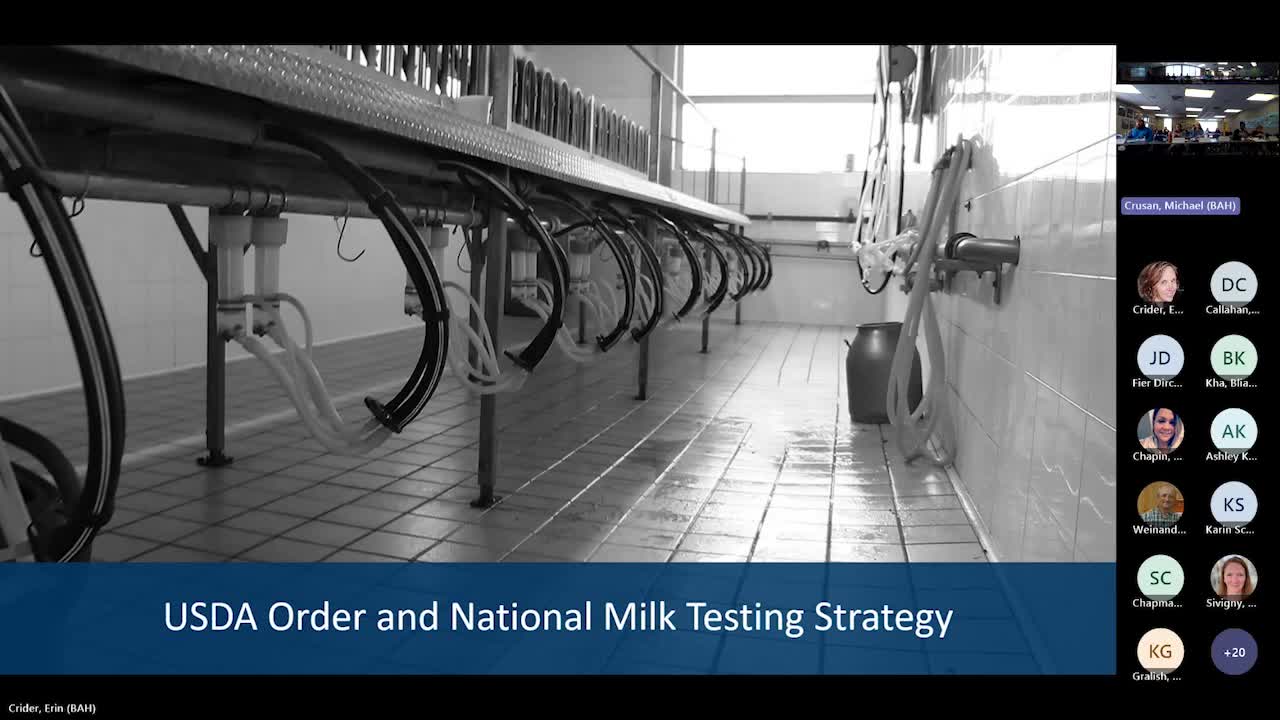Minnesota Implements National Milk Testing Strategy Amid Influenza Concerns
April 02, 2025 | Board of Animal Health, Agencies, Boards, & Commissions, Executive, Minnesota
This article was created by AI summarizing key points discussed. AI makes mistakes, so for full details and context, please refer to the video of the full meeting. Please report any errors so we can fix them. Report an error »

The Minnesota Board of Animal Health convened for its Quarterly Board Meeting on April 2, 2025, to discuss critical updates regarding the USDA's National Milk Testing Strategy and its implications for livestock health in the state. The meeting focused on the ongoing efforts to monitor and control influenza in dairy herds, particularly in light of recent positive cases detected in Minnesota.
The meeting began with a review of the USDA's National Milk Testing Strategy, which aims to utilize milk samples to test for influenza in livestock. The strategy consists of five stages, with Minnesota opting to initiate its efforts at stage two, focusing on bulk milk tank testing on individual farms rather than the initial stage of silo testing. This decision was made due to the complexities and time constraints associated with tracing back potential sources of contamination from bulk samples.
As of the meeting, 45 states had enrolled in the national testing program, with Minnesota now classified as an affected state following recent positive detections. The state has implemented a robust sampling plan, aiming to test all dairy farms monthly. Currently, there are approximately 1,625 cow farm permits in Minnesota, and the goal is to sample around 1,400 farms to ensure confidence in the absence of the virus.
The board highlighted the established regulatory framework for dairy inspections in Minnesota, which includes licensed haulers collecting samples during milk pickups. These samples undergo rigorous testing at certified laboratories, ensuring a comprehensive approach to monitoring livestock health. The board emphasized that all producers, regardless of where they ship their milk, are included in the testing program, and participation is mandatory.
The meeting also addressed logistical challenges faced during the implementation of the testing program, including delays due to federal funding freezes. However, recent developments indicated that funding had been unfrozen, allowing the state to proceed with its sampling efforts. The estimated cost of the program is around $275,000, which will be covered by a combination of federal and state funds.
In conclusion, the Minnesota Board of Animal Health is actively engaged in monitoring and controlling influenza in dairy herds through a structured and comprehensive testing strategy. The board plans to continue its sampling efforts over the coming months, with a focus on ensuring the health and safety of livestock across the state. Further evaluations will be conducted after the initial three-month testing period to determine the frequency of future sampling.
The meeting began with a review of the USDA's National Milk Testing Strategy, which aims to utilize milk samples to test for influenza in livestock. The strategy consists of five stages, with Minnesota opting to initiate its efforts at stage two, focusing on bulk milk tank testing on individual farms rather than the initial stage of silo testing. This decision was made due to the complexities and time constraints associated with tracing back potential sources of contamination from bulk samples.
As of the meeting, 45 states had enrolled in the national testing program, with Minnesota now classified as an affected state following recent positive detections. The state has implemented a robust sampling plan, aiming to test all dairy farms monthly. Currently, there are approximately 1,625 cow farm permits in Minnesota, and the goal is to sample around 1,400 farms to ensure confidence in the absence of the virus.
The board highlighted the established regulatory framework for dairy inspections in Minnesota, which includes licensed haulers collecting samples during milk pickups. These samples undergo rigorous testing at certified laboratories, ensuring a comprehensive approach to monitoring livestock health. The board emphasized that all producers, regardless of where they ship their milk, are included in the testing program, and participation is mandatory.
The meeting also addressed logistical challenges faced during the implementation of the testing program, including delays due to federal funding freezes. However, recent developments indicated that funding had been unfrozen, allowing the state to proceed with its sampling efforts. The estimated cost of the program is around $275,000, which will be covered by a combination of federal and state funds.
In conclusion, the Minnesota Board of Animal Health is actively engaged in monitoring and controlling influenza in dairy herds through a structured and comprehensive testing strategy. The board plans to continue its sampling efforts over the coming months, with a focus on ensuring the health and safety of livestock across the state. Further evaluations will be conducted after the initial three-month testing period to determine the frequency of future sampling.
View full meeting
This article is based on a recent meeting—watch the full video and explore the complete transcript for deeper insights into the discussion.
View full meeting
